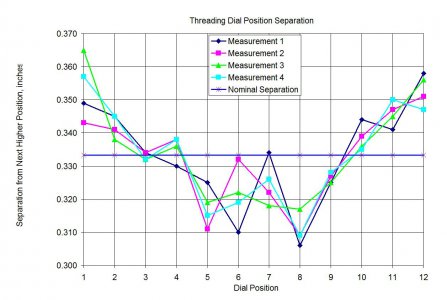- Joined
- Dec 2, 2012
- Messages
- 1,787
Good call, my old eyes missed the cross-tracking !
No offense but the point of using the compound set at 29 degrees is NOT to cut both flanks of the thread at the same time.
The tool skims the right flank, producing a good finish, while removing most of the metal on the left flank. At least this is the way that I was taught and to the best of my memory, literature supports the method.
Here's a pretty good discussion from "Practical Machinist"
http://www.practicalmachinist.com/vb/general/setting-compound-angle-when-thread-cutting-278289/
PS: I missed the "D2" material, which changes the process a bit
I saw an interesting video or article on the left half cutting thing, they used a half shaped tool so the right hand side dosn't rub.
Stuart

